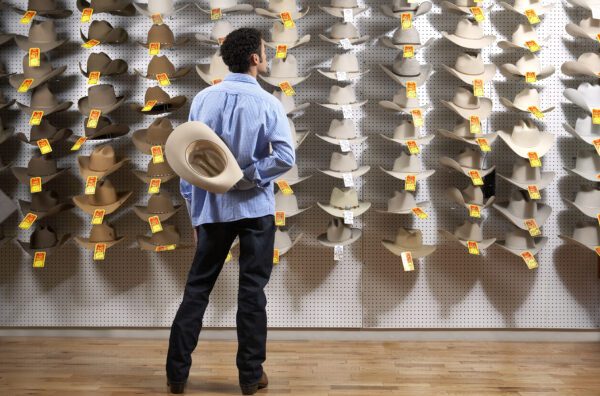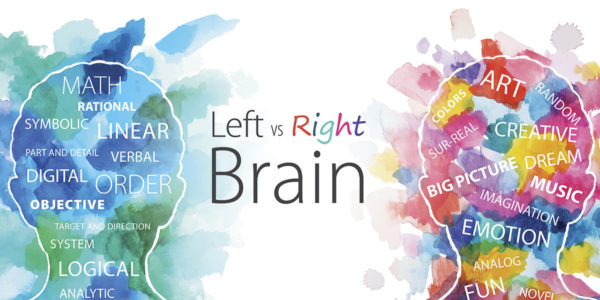China has 1.3 billion people, 670 million of which are men. Lynx, Europe’s bestselling brand of men’s hygienic products, saw opportunity there. If even one percent of those men became Lynx customers, Lynx would have a lot of new customers. Although Lynx was excited by the prospect of these men, these men were not excited by Lynx—the product was irrelevant to a culture without a phobia of man-stench.
Lynx could have defined itself as a niche market for those small few (a study done by the brand estimates 5%) male armpits that preferred to deodorize, but it saw that the opportunities were greater if it taught Chinese men to follow a new hygienic routine—one that nestled upon the usage not just of Lynx’s main seller, deodorant, but also its subsidiary products like face scrub, body wash, and hair gel.
The Lynx ads in China and their equivalent Axe (same brand, two names) ads in the US are both infamous for their explicitly sexual, outrageous scenarios depicting men first using the product and then being attacked by crazed women (In one U.S. ad, a man uses the chocolate-scented Axe spray and then gets eaten alive by hordes of women, who find him deliciously irresistible.) However, there are two big differences: In China, it’s not various men, it’s one man, Edison Chen—known for his all-too-public sexcapade fiascos; and two, the Chinese ads are not just product pitches, but step-by-step product usage tutorials. The ad agency created a series of videos featuring different Lynx products and instructions how to use them. In these videos, once Edison masters usage of these soaps and lotions, Chinese women throw themselves at him in reward, reinforcing in the viewers’ minds the advantage of incorporating Lynx products into their daily rituals.
In the most well-known video, sexily dressed women scientists at the “Lynx Lab” put Edison Chen in the lab shower, where they watch him use the Lynx shower lotion to wash his privates, characterized as his “little brother”—the ads literally depict a smaller version of Edison with whom the women interact.
The ad ends with everyone happy: Edison, the women and especially his little brother. Lynx Video
These videos took China by storm (the Chinese would even call it a typhoon). Unapproved for television by the Ministry of Culture, the ads ran online on underground sources, garnering a cultish following of 120 million views across the country. Within just two months, Lynx became the number one male deodorant brand and the number two shower cream. (Watson, 2012) Given that the male beauty product market is still underdeveloped in China, these numbers may seem negligible. But coupled with Lynx’s rise to becoming the 3rd most followed brand on RenRen in the first six months, (Watson, 2012) we can understand with what velocity the brand gained adherence. Lynx could not have enjoyed this success had it been solely marketed to the preexisting niche; it was only by teaching the Chinese how to westernize their hygiene habits that Lynx was able to prosper.
It is worth comparing this strategy to that of Axe’s launch in the US. Those initial US Axe ads were never geared towards usage instruction; they were just attention grabbers, bling for the brand. Ironically, Axe has only had to issue instruction to the US after the brand became too popular and the brand became associated with the stink bombs that it was molding seventh grade boys into.
Brands with products that neither have existing places in Chinese culture nor have decided to carve one out lose out rather quickly.
Home Depot, although quite a standard in the US, is one of these brands. In China, it brought the sale of “do-it-yourself” materials to a “do-it-for-me” culture, not surprisingly, unsuccessfully. In a country where labor is so cheap, the only people who would need to go to a place like Home Depot are the labor, and they, ironically, cannot afford the store’s prices.
Compare Home Depot’s “failing to grasp the local culture and importing alien business models that are better suited to the U.S.” to Ikea, a brand that was able to shift its model to reflect Chinese interests by adding extra services in China to help customers assemble their furniture, and is now thriving in multiple cities across China.
Like Home Depot, Best Buy also had to close down all of its stores in China due to a negligence to convert a business created for the US into one crafted for China. “We were stupid and arrogant,” says David Deno, Best Buy’s Asia chief in hindsight. “The company’s initial assumption that to be successful in China, all the company had to do was import the Best Buy model as is, with no tweaking for the Chinese market. But Chinese consumers weren’t ready for Best Buy as is.”
There is no wonder why you need to either have or create a connection to the Chinese culture in order to succeed in China. Besides gum and Skymall, nothing can survive by being an impulse purchase. You must have a meaning in cultural context, a reason for why people need you. You need a something–anything from mad cow disease to low self-esteem–for which you are a tool to solve.
References for this post:
- “How Lynx Changed Cultural Notions About Men and Fragrance in China.” Ad Age Global. N.p., 16 Jan. 2012. Web.
- Grgurich, John. “Why China Doesn’t Like Barbie, Best Buy or DIY.” Daily Finance. N.p., 20 May 2012. Web.
- “Home Depot Learns Chinese Prefer ‘Do-It-for-Me'” The Wall Street Journal. N.p., 14 Sept. 2012. Web.
- Lindstrom, Martin. “Can a Commercial Be Too Sexy For Its Own Good? Ask Axe.” The Atlantic. N.p., 24 Oct. 2011. Web.
- McGee, Suzanne. “Lessons from Home Depot’s China Failure.” MSN Money. The Fiscal Times, 19 Sept. 2012. Web.
- “Population of Provinces, Municipalities, and Autonomous Regions, 2010 Census of China, and Change in the Percent Distribution by Area, 2000 – 2010.” Population Reference Bureau. N.p., 2011. Web.











